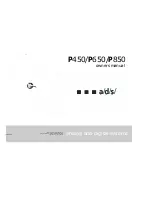
www.graf-online.de
Page 7 of 9
5. Installation and assembly
5.2.4
Connection of several tanks
Two or more tanks are connected via the
assembly surfaces by means of GRAF
special seals and basic drainage pipes
(to be provided at construction site). The
apertures
must
be
drilled
to
the
corresponding size using only the GRAF
special crown bit. It must be ensured that
the distance between the tanks is at least
600 mm. The pipes must project at least
200 mm into the tanks.
5.3
Insertion and filling
The tanks must be inserted, impact-free,
into the prepared trench using suitable
equipment. To avoid deformities, the tank
is filled 1/3 with water before filling in the
tank surrounding.
Afterwards the surrounding (roundgrain
gravel, max. grain size 8/16) is then filled
in layers of max. 30 cm steps and is
compacted.
The individual layers must be well-
compacted (manuel tamper). Damage to
the
tank
must
be
avoided
during
compaction.
Mechanical
compaction
machines must not be used under any
circumstances. The surrounding must be
at least 500 mm wide.
5.4
Routing connections
All feed and overflow pipes must be routed
with a decline of at least 1% in the
direction of flow (possible, subsequent
settling must be taken into consideration in
this case). If the tank overflow is
connected to a public sewer, this must be
protected against reflux by means of a
lifting station (mixed sewer) or reflux seal
(pure rainwater sewer) according to DIN
1986.
–All suction, pressure and control lines
must be routed in an empty pipe, which
must be routed as straight as possible,
without bending, to the tank with a decline.
Necessary bends must be formed using
30° moulded sections.
Important: The empty pipe must be
connected to an aperture above the max.
water level.
Sewer











































